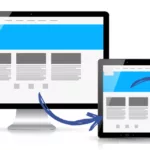There is something undeniably ubiquitous about those tiny plastic cards and visiting the library. Whether dealing with a librarian directly or using one of their point-of-loan terminals, a plastic card is almost always involved at some point throughout the transaction. But if over all these years you have been thinking that library cards need to just be library cards, you are mistaken. Libraries the world over have begun to put those wallet-sized pieces of plastic to a number of other creative uses.
Part of the reason for this is that libraries these days are rarely just libraries. They have taken on a much larger socio cultural role in our society than just big book warehouses. They are home to workspaces, steady Internet and Wi-Fi access, student study areas, book clubs, and academic conferences and presentations.
They often offer classes and groups like citizenship test preparation, literacy improvement, and job markets – even game nights! Librarians themselves often have a background in scholarship and academic research; they are resources unto themselves who are typically more than happy to point you in the direction of new veins of research and open your eyes to all the different assets your local library supplies. Oh, and introduce you to your new favorite book, of course.
No longer just the bastion of dusty old tomes, libraries also lend and offer access to a heck of a lot more stuff than books. Nearly every library these days has a DVD and music collection free for you to peruse. Many offer access to rentable laptops and tablets for those who need them in a pinch.
Institutions like the Toronto Public Library even offer the use of a fully functional 3D printer, accessible to anyone who books it in advance. As our culture changes, technology evolves, and the digital frontier expands, many would be surprised to discover the myriad ways in which their local library has found to keep up.

As such, just as libraries are no longer just libraries, library cards are no longer just library cards. They are printed using the same technology as ID cards, swipe cards, and all-access passes – so why shouldn’t they do just as much? For libraries, the benefits of having ID card printers on-site include being able to quickly snap patrons’ photos and print them in a few minutes, meaning that there is no more waiting in the mail for your library card.
They can also program them to give patrons access to study rooms, research areas, various stacks, even different floors. Library cards can be programmed to give access to these areas during certain specific times and on specific days. Library cards can also give patrons access to eBooks, PDFs, and academic journals online.
Haven’t visited a library in a few years? Consider dropping by your local branch. Libraries have transformed drastically over the last ten to fifteen years. Like all public institutions, libraries have had to find ways to stay relevant. You might be surprised by some of the developments they’ve made in order to keep up with the times!








